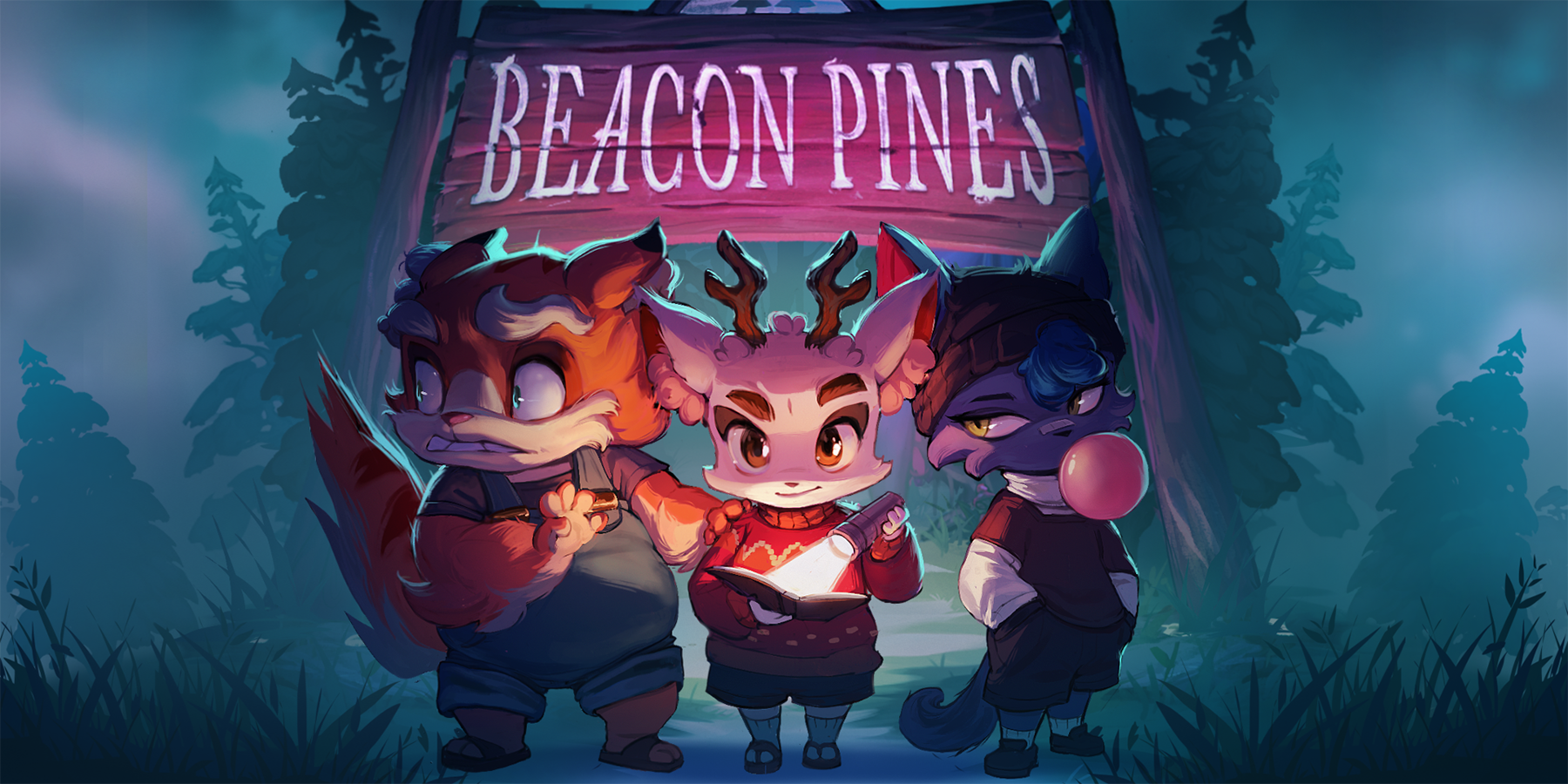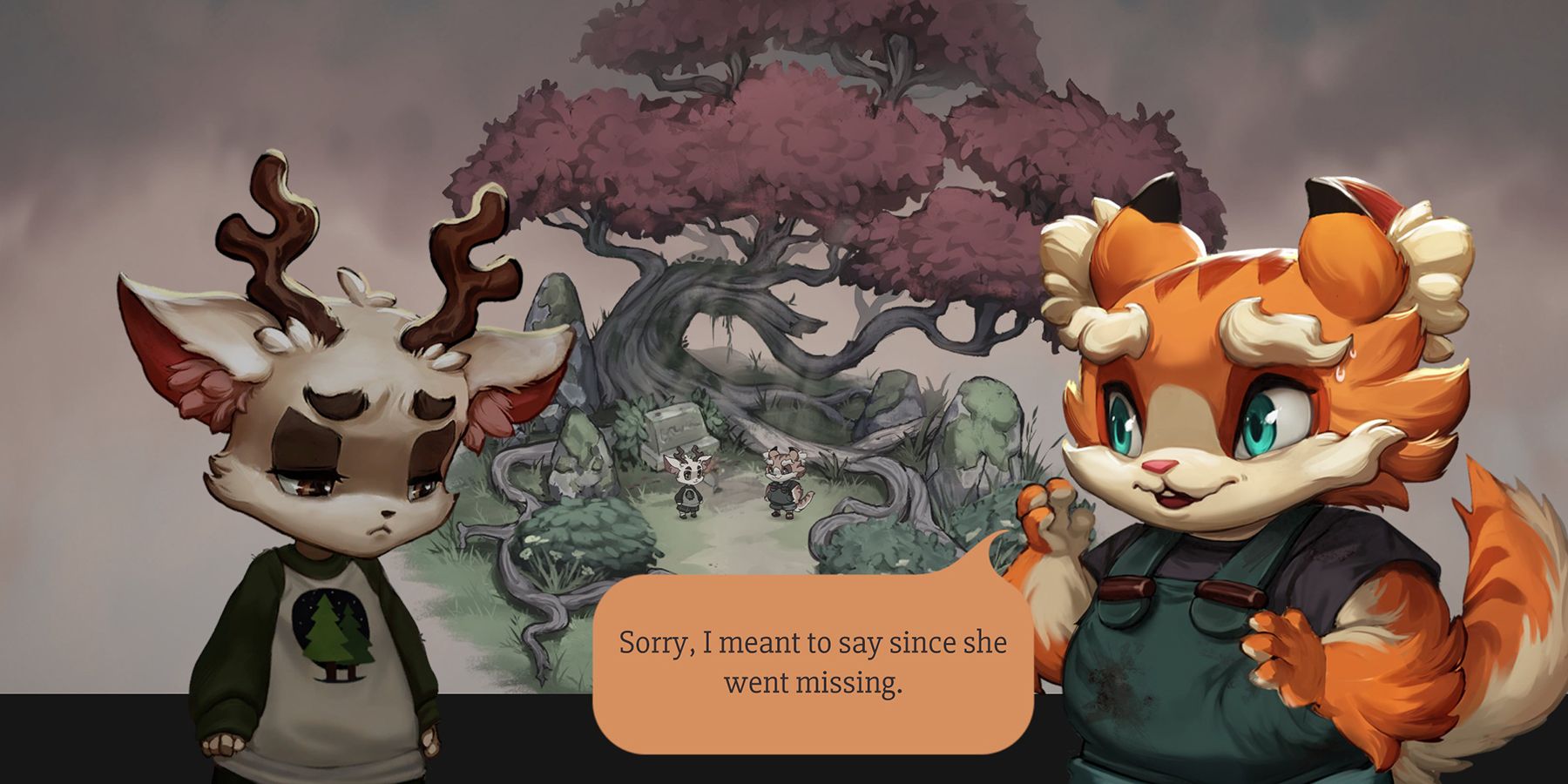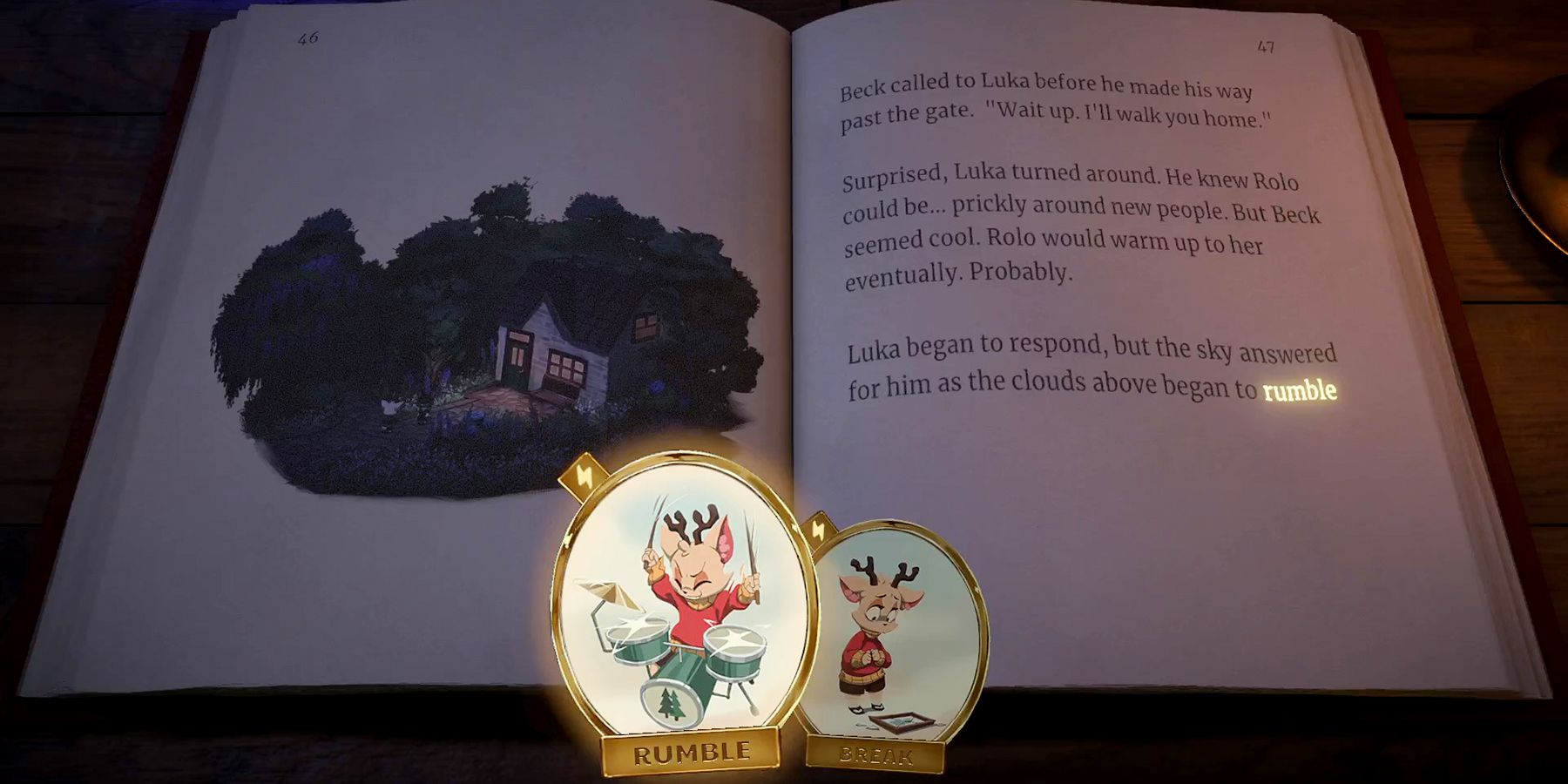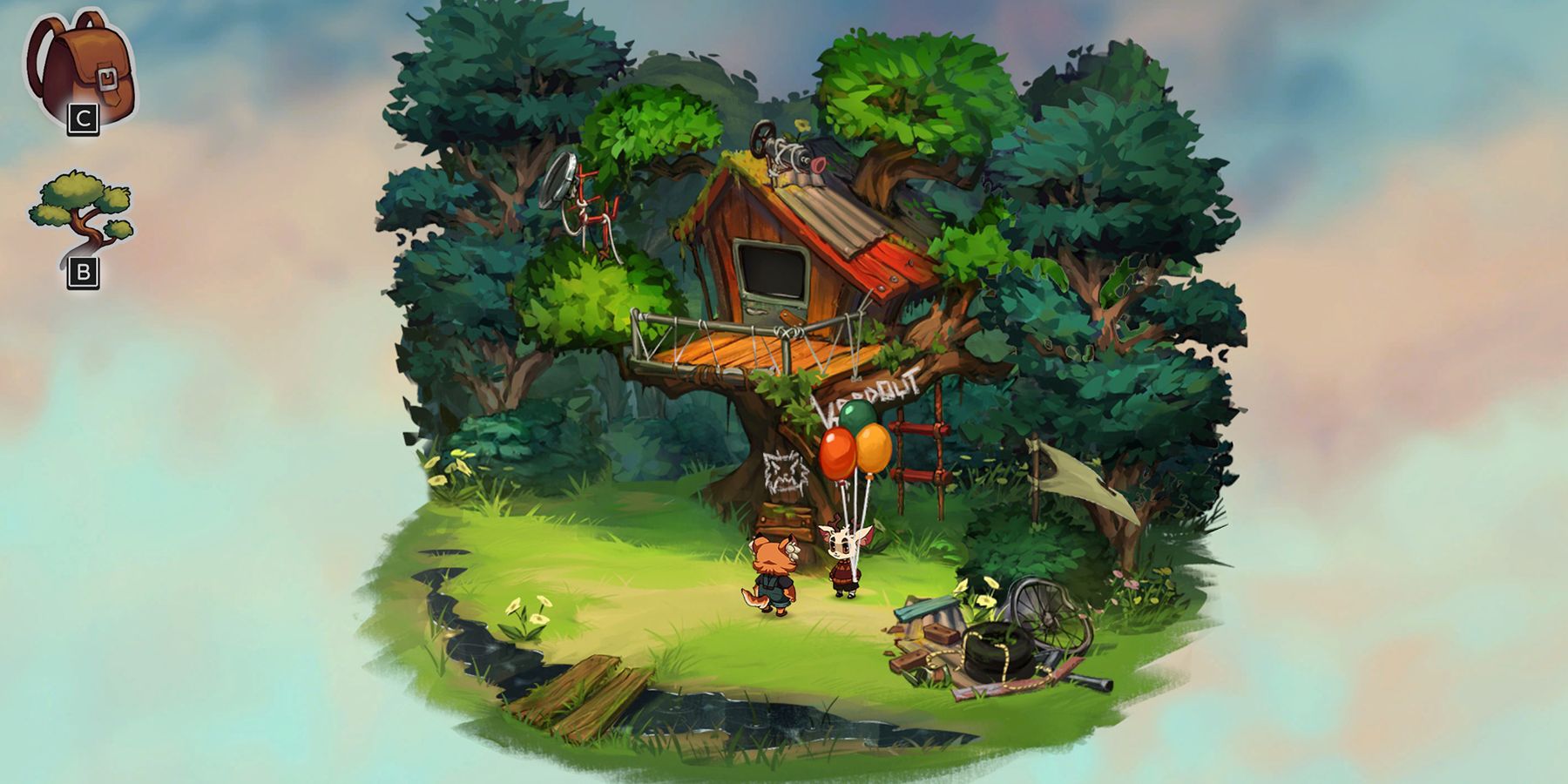Developed by Hiding Spot Games, Beacon Pines is another Kickstarter success story that shows how public crowdfunding can result in some unique and artistic indie games. In less than a week, the project met its funding goal and hundreds of backers showed support for the cute and slightly creepy narrative-based game that releases on September 22 for multiple platforms.
Beacon Pines tells the story of a young deer and the adventure he and his friends unintentionally find themselves caught up in. The anthropomorphic inhabitants of the titular village each have distinct and generally endearing personalities that help bring the story to life, not the least of whom is protagonist Luka. Mourning the passing of his father and the more recent disappearance of his mother, Luka’s actions are at first spurred by love and later by a greater sense of duty to his hometown.
As a narrative-driven title more akin to a visual novel than an actual video game, Beacon Pines will certainly not appeal to some players. There is very little gameplay, and the majority of the time is spent clicking the same button over and over, which quickly gets repetitive, to advance the story. Indeed, the beginning of the game takes some time to show its cards and could lose a few players before they get to the good stuff.
Those who persevere, however, will find themselves immersed in an engaging mystery that may successfully combat the slight feeling of boredom instilled by the lacking gameplay. The story, it turns out, is one of the aspects that may keep players going until the end. The game’s cutesy, picture book graphics hide a slightly creepy tale that includes murder and conspiracy, concealed identities, and a sci-fi element. There are even a few unexpected twists that may have some players gasping with surprise as the tale unfolds.
Unfortunately, even the mystery of Beacon Pines won’t be enough to hold everybody’s interest. There is a lot of reading and a lot of opportunity for the mind to wander. Despite the game being entertaining, it’s hard to call it fun, and it doesn’t help that Beacon Pines overstays its welcome just a bit. When players are ready for the game to end, it keeps going for a few hours longer, even with speedreading and button mashing to get through the text more quickly. It’s probable that some people will just move on without sticking it out.
Another standout element of Beacon Pines is the one most touted in the marketing materials — the mechanic that makes the game feel like a hybrid between Mad Libs and a “choose your own adventure” experience. While playing, words will be found in random places and added to a type of lexicon called The Chronicle. At key moments in the story, the player will be able to influence what happens next by selecting an available word. For example, at one point, the sky is cloudy overhead and the player is given the choice between “rumble” or “break” to decide if the weather clears or if it begins to rain.
These options come somewhat regularly, but not frequently. This means that an entire chapter, or even a few, may unfold as a result of a single word choice, and the player has no influence on what happens in those chapters. In other words, choosing a particular word is more comparable to riding along a set track, choosing which fork the ride will take next, and then sitting back to watch the new scenery go by. This means even less interaction than a visual novel like Doki Doki Literature Club or Supermassive’s The Dark Pictures Anthology, which, as stated, may not be sufficient to keep some players’ interests.
Because each word selected by the player leads to a new branch in the storyline that can last for one or more chapters, it can become a tad difficult to keep everything straight. However, the unfolding of the story, on whichever path, has been designed skillfully enough by Hiding Spot that it all meshes fairly well. The different story branches don’t feel completely distinct, and information that is revealed along one fork of the road fills in gaps left in other paths. In the end, they all come together seamlessly to form a somewhat satisfying conclusion.
One of the only real negatives to the design of Beacon Pines’ branching narrative is the fact that, ultimately, all forks lead to the same resolution and there aren’t multiple endings to the story. In fact, although the player has three words to choose from in the final chapter, only one will lead to the game’s real conclusion and epilogue. In a way, this makes The Chronicle and the player’s decisions throughout the game seem almost meaningless.
However, by the end of Beacon Pines, every single possible option will have been viewed by the player. This leads one to understand that the varied choices in the indie game aren’t really what’s important. Rather, seeing all the scenarios that could have happened and enjoying watching them play out is perhaps the true focus of the game. This is what enables players to uncover the full story of what is happening in the little town and reveal the range of interesting personalities that populate it.
The various characters are another strength of Beacon Pines. Mostly, their personalities are superficial and slightly stereotypical, but the main cast — Luka, Rolo, Beck, and a few others — are sufficiently developed that some players will care about what happens to them by the end of the game. The comeuppance of the bad guys will be satisfying, a decision that results in the demise of a character will be difficult to make, and Luka finding out what happened to his mother and getting closure will become important to players immersed in the story.
Along with the pleasant narration of voice actor Kirsten Mize, the Beacon Pines development team consisted of only three other people — Matt Meyer, Ilse Harting, and Brent Calhoun — who all wore multiple hats including creative director, writer, artist, audio editor, music, and sound effects. It’s an impressive feat that makes the game that much more worthy of appreciation. Unfortunately, despite its positives, Beacon Pines simply won’t be a hit for everyone. And while its story and gameplay mechanics are interesting and fun, they aren’t necessarily memorable. This is a game that will certainly draw in a select few, but that an even smaller group will add to their list of favorites.
Beacon Pines releases on PC, Switch, Xbox One, and Xbox Series X/S on September 22. Game Rant was provided a PC code for this review.




